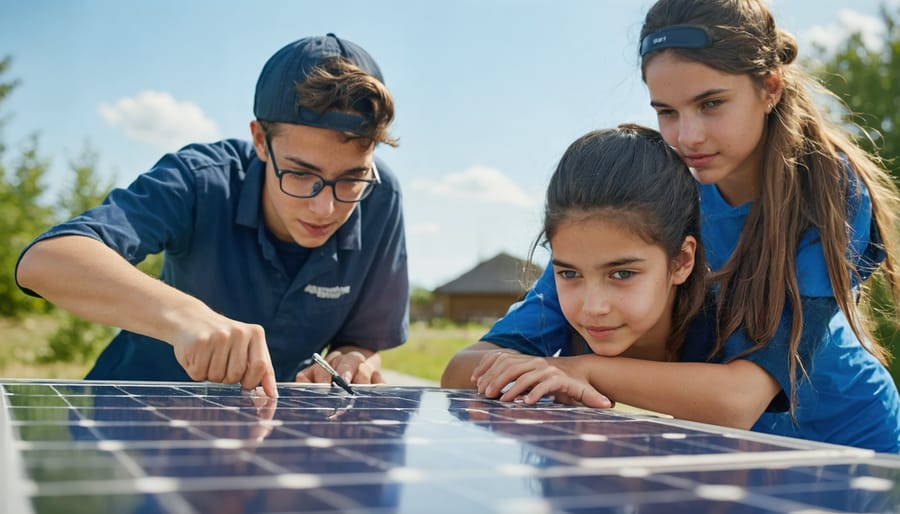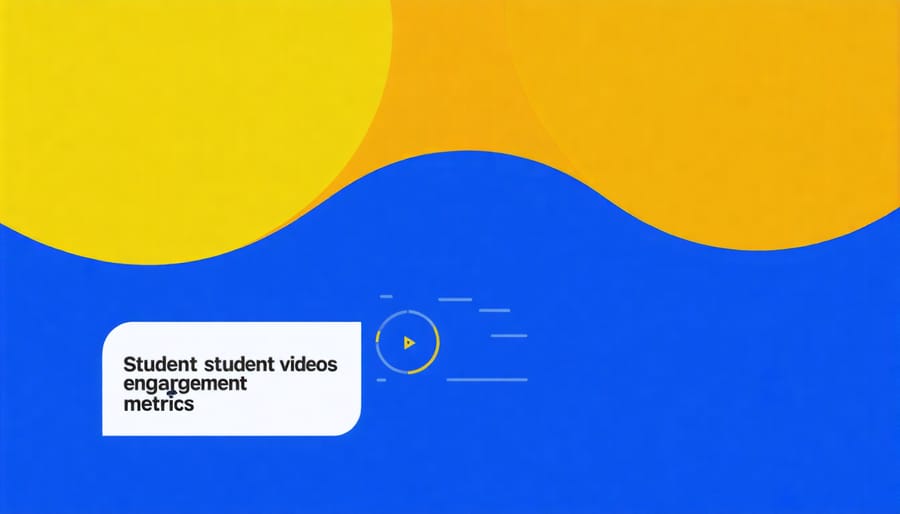Transform complex solar system concepts into engaging educational content through professionally crafted videos that drive measurable learning outcomes. Educational solar system videos serve as powerful tools for facility managers, instructors, and sustainability professionals seeking to communicate the technical aspects of photovoltaic technology and renewable energy solutions.
Modern video production techniques, combined with accurate scientific visualization, enable organizations to effectively demonstrate solar energy principles, installation procedures, and maintenance protocols. These visual resources accelerate understanding of critical concepts while ensuring consistent training quality across multiple locations.
Industry leaders leverage educational solar content to streamline employee onboarding, enhance customer education programs, and facilitate stakeholder communications. Professional-grade solar system videos deliver demonstrable ROI through reduced training costs, improved comprehension rates, and increased adoption of sustainable energy practices.
By incorporating dynamic animations, real-world case studies, and practical demonstrations, organizations can build comprehensive visual libraries that address both technical requirements and commercial objectives in the expanding renewable energy sector.

Creating Impactful Solar System Educational Content
Key Elements of Successful Educational Videos
Effective educational videos about solar systems require several key components to maximize learning outcomes and viewer engagement. Clear, accurate visualization of complex astronomical concepts is essential, incorporating high-quality 3D animations and realistic representations of celestial bodies and their movements. The pacing must be carefully balanced, allowing viewers sufficient time to process information while maintaining their interest.
Professional narration with precise terminology helps establish credibility while ensuring accessibility for diverse audiences. Educational videos should include comparative size references and distance scales to help viewers grasp the vast dimensions of space. Interactive elements, such as pause points for reflection or built-in questions, enhance retention and encourage active learning.
Supporting data visualization through charts, graphs, and infographics helps convey technical information effectively. The content should progress logically, building upon foundational concepts before introducing more complex topics. Including real-world applications and practical examples makes the content more relevant and memorable. Regular updates to reflect current scientific understanding and emerging research ensure the educational material remains accurate and valuable over time.
Age-Appropriate Content Development
When developing educational solar system videos, content must be carefully tailored to match the cognitive and learning capabilities of different age groups. For younger students (K-3), focus on basic concepts using colorful animations and simple explanations, incorporating successful strategies from solar energy in elementary education programs.
For middle grades (4-8), introduce more detailed scientific concepts while maintaining engagement through interactive elements and real-world applications. Include practical demonstrations of solar panel functionality and basic energy conversion principles.
High school content should incorporate advanced concepts such as photovoltaic technology, energy efficiency calculations, and system design considerations. Use technical diagrams, data analysis, and case studies from actual commercial installations.
For professional development and higher education, focus on comprehensive system analysis, ROI calculations, and industry-specific applications. Include detailed specifications, compliance requirements, and current market trends while maintaining accessibility for non-technical audiences.
Practical Applications in Educational Settings
Classroom Integration Strategies
Educational solar system videos can be seamlessly integrated into existing curricula through strategic implementation methods. Begin by aligning video content with specific learning objectives and standards within your energy education program. For maximum effectiveness, break longer videos into digestible segments of 5-10 minutes, allowing time for discussion and practical application between segments.
Consider implementing a flipped classroom approach where learners watch the videos before training sessions, maximizing face-to-face time for hands-on activities and problem-solving exercises. Create accompanying worksheets or interactive assignments that reinforce key concepts from the videos, such as solar panel efficiency calculations or system design principles.
Supplement video content with real-world case studies from your organization or industry partners. This combination helps learners connect theoretical knowledge with practical applications. Incorporate group activities where teams can analyze video content and apply concepts to solve actual solar installation challenges or efficiency optimization problems.
For professional development sessions, use videos as discussion starters, encouraging participants to share their experiences and insights. Create assessment tools that measure comprehension of both technical concepts and practical applications demonstrated in the videos. Consider developing a video library organized by topic and complexity level, allowing learners to revisit content as needed for reinforcement or reference during project work.
This structured approach ensures that educational solar system videos serve as effective tools for knowledge transfer while maintaining engagement and practical relevance.
Interactive Learning Opportunities
Interactive learning experiences enhance the effectiveness of educational solar system videos by combining visual content with practical applications. Organizations can maximize training outcomes by incorporating solar energy activities for students and professionals that reinforce video content through hands-on engagement.
Consider implementing simulation exercises that allow participants to virtually design and configure solar installations. These interactive tools can demonstrate system sizing, panel placement, and energy production calculations in real-time. Complement video presentations with physical demonstrations using solar panel models, monitoring equipment, and basic electrical components to illustrate key concepts.
Data analysis exercises using actual performance metrics from existing installations provide practical experience in system evaluation and optimization. Participants can work with monitoring software to track energy production, identify efficiency patterns, and calculate return on investment scenarios.
Group projects focusing on site assessments and system design proposals offer opportunities to apply learned concepts in real-world contexts. These activities can include shade analysis, roof evaluation, and financial modeling exercises that mirror actual commercial solar implementations.
For maximum retention, structure these activities to follow immediately after relevant video segments, allowing participants to reinforce theoretical knowledge with practical application. This integrated approach ensures comprehensive understanding of solar energy systems while developing valuable hands-on skills.

Measuring Educational Impact
Success Metrics and Analytics
Measuring the effectiveness of educational solar system videos requires a comprehensive analytics approach combining quantitative and qualitative metrics. Key performance indicators (KPIs) should track viewer engagement, knowledge retention, and practical application outcomes. Video completion rates, average viewing duration, and drop-off points provide crucial insights into content effectiveness, while interactive quizzes and assessments measure immediate comprehension.
Learning management systems (LMS) integration enables detailed tracking of individual progress and group performance metrics, contributing to the overall solar education transformation. Post-viewing surveys and feedback forms gather qualitative data about content clarity, practical relevance, and areas for improvement.
Implementation success can be measured through:
– Pre and post-training knowledge assessments
– Certification completion rates
– Professional certification exam pass rates
– Real-world application metrics
– Return on training investment (ROTI)
Analytics dashboards should track these metrics over time, enabling content creators and trainers to optimize their educational materials continuously. Regular benchmark comparisons against industry standards help maintain competitive advantage and ensure training effectiveness. Monthly reporting and quarterly reviews facilitate data-driven decisions for content updates and curriculum adjustments.

Student Engagement and Retention
Educational videos about solar systems demonstrate remarkable effectiveness in improving student engagement and knowledge retention. Studies show that visual learners, who comprise approximately 65% of the population, retain information up to 55% better when presented through dynamic video content compared to traditional text-based materials.
Interactive elements within solar system videos, such as animated system components and real-time energy flow demonstrations, create memorable learning experiences that resonate with professionals across different roles. When combined with practical examples and case studies, these videos help maintain attention spans and facilitate deeper understanding of complex solar concepts.
The incorporation of data visualization and 3D modeling in educational videos has shown to increase information retention rates by up to 40% compared to conventional training methods. This improved retention is particularly valuable for technical teams learning about installation procedures and maintenance protocols.
Furthermore, the ability to pause, rewind, and review specific segments allows learners to progress at their own pace, leading to better comprehension of critical concepts. Research indicates that professionals who engage with educational solar system videos demonstrate 25% higher confidence levels when applying learned concepts in real-world situations, making them an invaluable tool for workforce development and continued education.
Future Trends in Solar Education
The landscape of solar education is rapidly evolving, driven by technological advancements and innovative teaching methodologies. Augmented reality (AR) and virtual reality (VR) applications are emerging as powerful tools for demonstrating complex solar system concepts, allowing learners to interact with virtual solar installations and understand system components in three-dimensional space.
Machine learning algorithms are being integrated into educational platforms to create personalized learning experiences, adapting content delivery based on individual comprehension levels and learning styles. These adaptive learning systems ensure optimal knowledge retention and skill development for professionals in the solar industry.
Interactive simulation software is becoming increasingly sophisticated, enabling users to model different solar installation scenarios and predict system performance under various environmental conditions. This technology provides valuable hands-on experience without the risks associated with physical equipment manipulation.
Mobile learning applications are gaining prominence, offering just-in-time training solutions that professionals can access on-site during installations or maintenance procedures. These apps often incorporate microlearning modules, breaking down complex concepts into manageable, bite-sized segments.
Looking ahead, we can expect to see greater integration of artificial intelligence for real-time troubleshooting guidance and remote mentoring capabilities. Blockchain technology may also play a role in verifying professional certifications and tracking continuing education credits, ensuring quality standards across the industry.
Educational solar system videos serve as powerful tools in bridging the knowledge gap between technical expertise and practical implementation of renewable energy solutions. These resources enable stakeholders to visualize complex concepts, understand system components, and grasp the long-term benefits of solar installations. By presenting information in an accessible and engaging format, these videos accelerate decision-making processes and foster confidence among business leaders and facility managers considering solar energy adoption. Furthermore, they play a crucial role in staff training, stakeholder education, and public awareness campaigns, ultimately contributing to the wider acceptance and implementation of sustainable energy solutions. As organizations continue to prioritize sustainability and cost-effective energy management, educational solar system videos remain instrumental in driving informed decisions and successful renewable energy transitions.

